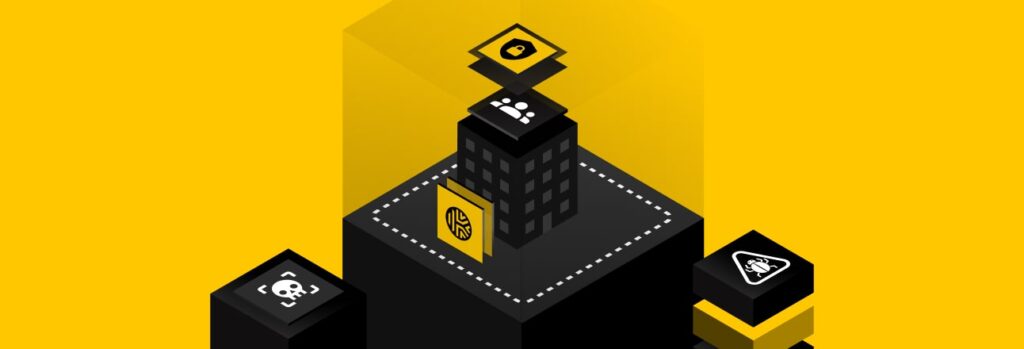The main difference between an attack vector and an attack surface is that an attack vector is the specific way a cybercriminal can take advantage of
Updated on October 4, 2023.
Businesses must invest in a dark web monitoring tool to protect their employees from potential cyber threats. The dark web is home to extensive criminal activity—including a myriad of cybercrime services that can irreparably damage your company and its reputation.
Keep reading to learn more about dark web monitoring, its benefits and other ways to protect your company’s sensitive information from reaching the dark web.
What Is Dark Web Monitoring?
Dark web monitoring is a process that involves monitoring and tracking activities that happen on the dark web. The dark web is the non-visible part of the internet and is not available on public search engines. It can only be accessed through a specialized web browser, such as Tor, which keeps internet activity anonymous and, as a result, creates an environment that is known for illegal activity.
A dark web monitoring tool protects organizations from the dangers of the dark web by searching the dark web to uncover if an organization’s sensitive information is on it. If and when this information is found, alerts are sent to the company to allow them to take quick action and secure any breached accounts.
How Does Dark Web Monitoring Work?
Dark web monitoring works by continuously scanning the dark web for information, like login credentials, and matching them to your information. Most dark web monitoring tools are offered by password managers. A password manager is a tool that stores your login credentials in a digital vault. When you save your login credentials in a password manager, the featured dark web monitoring tool scours the dark web for any breached accounts that match the login credentials you have saved. A good dark web monitoring tool for businesses delivers in-depth monitoring of billions of records on the dark web while still upholding a zero-knowledge security architecture – in other words, it can detect if your credentials are on the dark web without actually knowing what they are. It should offer:
- Automatic notifications for any records in your vault that match a breached credential
- Remediation of breached passwords within the password manager tool
- Unlimited scans of employee passwords on unlimited devices
When the tool comes across a compromised account, it alerts you to resolve the issue by requesting you go to the affected site to update your credentials. The password manager will recognize that you’re updating your credentials and prompt you on-screen to generate and save your new credentials in the existing record. If you ignore the alert, the record will be skipped on future scans, and your vault will continue to show that the record is at risk.
Why Your Business Needs Dark Web Protection
Businesses need dark web protection to secure their data against cyber threats. Below are some of the benefits of dark web monitoring:
- Identify data breaches sooner: The moment your information is found on the dark web, a dark web monitoring tool will notify you and your team immediately, prompting you to take action and mitigate damages.
- Prepare your organizations for future threat actors: If your company’s information makes its way to the dark web, dark web monitoring gives you insight into your network’s vulnerabilities. It forces your team to assess and improve your security posture to prevent future cyber attacks and breaches.
- Protect your team’s personal information: Dark web monitoring notifies you when any of your vault records are found online. This knowledge allows you to take action quickly, preventing criminals from using the stolen information for extortion or blackmail.
How To Protect Your Business Information From the Dark Web
In addition to using a dark web monitoring service, teams should practice good cyber hygiene and implement solutions that can prevent sensitive information from landing on the dark web. Use the tips below to strengthen your company’s security posture.
Practice good cyber hygiene
Before equipping your company with advanced tools and devices to upgrade cybersecurity, start by educating your team on good cyber hygiene practices. Below are some rules to follow:
- Practice password hygiene: Use a different password for every online account. Rotate passwords every 30 to 90 days. Use autofill to prevent cybercriminals from using keystroke logging tools to obtain your information.
- Know how to spot a phishing scam: Social engineering tactics put your team at risk. Be sure employees watch out for phishing scams by teaching them to recognize common signs such as grammatical errors, suspicious email addresses and a tone of urgency.
- Invest in basic security software: Install antivirus and anti-malware software to strengthen your cyber posture. Update outdated software and equipment since older models and versions may have vulnerabilities.
Use a Password Manager
A password manager offers several benefits that help prevent data breaches from occurring. Password managers provide you with an encrypted digital vault to securely store all your credentials. Some useful features include a password generator and Multi-Factor Authentication (MFA). Password managers can help you create strong passwords and safeguard your passwords from being compromised.
How Keeper Can Protect Your Business
As cybercriminals adapt their attack strategies, an increasing amount of compromised credentials are making their way to the dark web, putting more victims and companies at risk. You need to secure your online accounts by implementing cybersecurity best practices and using the right security tools to protect your business from the dangers of the dark web. If you’re worried your email address was exposed to the dark web, you should try Keeper’s free dark web scanner to check.
 Cybersecurity
Cybersecurity 
